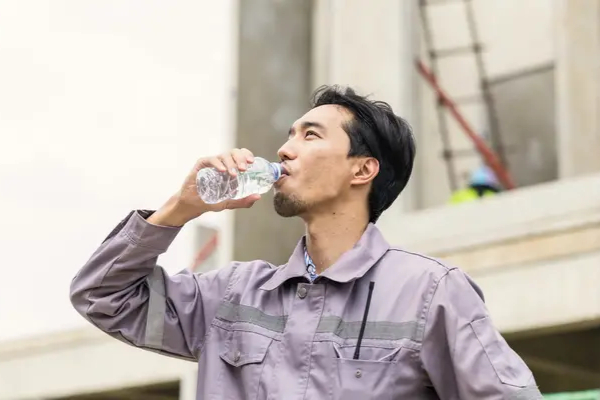Topics
Signs and symptoms of stress and anxiety
Stress and anxiety can present a wide range of signs and symptoms, affecting both your mind and body. Here is a breakdown of what you might experience:
- Physical symptoms: Increased heart rate, muscle tension, excessive sweating, gastrointestinal discomfort, fatigue.
- Emotional symptoms: Persistent worry, irritability, racing thoughts.
- Lifestyle changes: Sleep disturbances, changes in appetite.
These symptoms often overlap and impact your overall well-being. However, by acknowledging the symptoms, you can begin to manage the effects of stress and anxiety on your mental and physical health. This awareness allows you to seek the right resources and support systems to navigate these challenges effectively.
Stress and anxiety relief with breathing
Anxiety and stress can be overwhelming, but relief may be closer than you think. Breathing exercises, rooted in mindfulness, are designed to ease anxiety and reduce stress, offering a pathway to calm amidst life’s chaos.
Whether through simple deep breaths or structured techniques, breathing exercises help you regain control and find peace within. By activating the body’s relaxation response, deep breathing increases oxygen supply, calms the nervous system, and lowers stress hormones like cortisol.
These breathing techniques also encourage mindfulness, helping you stay present, regulate emotions, and calm the mind and body, relieving overwhelming feelings.
Breathing Technique | Explanation |
Alternate nostril breathing | This rhythmic breathing technique balances the brain’s hemispheres, enhancing cognitive function and reducing stress. It fosters a sense of harmony and balance within both the mind and body.
|
Belly breathing (Diaphragmatic breathing) | Belly breathing or diaphragmatic breathing involves deep inhalation that expands the belly as the diaphragm lowers, allowing for maximum oxygen intake. This technique activates the parasympathetic nervous system, triggering the body’s relaxation response. It helps lower cortisol levels and heart rate, easing muscle tension, promoting mental clarity, and fostering a sense of calm.
|
Humming breath | The humming breath involves inhaling deeply and exhaling while humming like a bee. By doing so, you stimulate the vagus nerve, triggering a relaxation response. This reduces stress hormones, soothes the mind, and fosters tranquillity. Its rhythmic nature promotes mindfulness and mental peace, offering a serene break from stress. |
Lion’s breath | The Lion’s Breath technique involves a deep inhalation followed by a forceful exhale through the mouth, with the tongue extended and a silent roar. The powerful breath release engages the throat and facial muscles, helping to release tension and bottled-up emotions. This playful practice encourages a sense of empowerment and freedom, alleviating anxiety by letting go of stored tension. Incorporating Lion's Breath into your routine helps ease stress and brings a renewed sense of lightness and ease to both body and mind. |
Long exhale | The long exhale technique involves exhaling longer than you inhale to activate the body’s relaxation response. This method enhances carbon dioxide release, calming the body by stimulating the parasympathetic nervous system. It lowers heart rate, blood pressure, and muscle tension while promoting mindfulness and reducing stress. |
Mindfulness breathing | Mindfulness breathing, a core meditation practice, involves observing your breath without changing its rhythm, helping you stay present. It increases awareness, detaches from anxious thoughts, and calms the nervous system. Regular practice enhances resilience and emotional balance, making it a simple yet powerful tool for managing anxiety and stress. |
Pursed-lip breathing | Pursed-lip breathing is a technique where you inhale through your nose and exhale slowly through pursed lips, like blowing out a candle. This method improves oxygen exchange, reduces breathing effort, and calms the mind. It stabilises breathing rates, alleviates breathlessness, lowers heart rate, and promotes relaxation. Easily adaptable, it offers immediate relief for managing anxiety and stress. |
Resonant breathing | Resonant breathing, or coherent breathing, helps relieve anxiety and stress by syncing your breath with your heart rate. To practice:
This technique activates the relaxation response, reduces stress hormones, and promotes a balanced nervous system. |
4-4-4 breathing | The 4-4-4 breathing technique helps manage anxiety and stress by following a structured pattern: inhale for four counts, hold for four counts, and exhale for four counts. To practice:
This technique regulates breath, reduces heart rate, and calms the nervous system, enhancing oxygenation and mindfulness while alleviating anxious thoughts. |
4-7-8 breathing | The 4-7-8 breathing technique helps with sleep, anxiety, and stress by inhaling for 4 counts, holding for 7, and exhaling for 8. To practice:
|
Make an appointment at Gleneagles Hospitals
It is important to identify when stress and anxiety begin to significantly affect your daily life and overall functioning. While occasional stress is typical, ongoing or intense anxiety may require professional assistance.
If these symptoms disrupt your daily activities, cause persistent physical issues, lead to sleep problems, or trigger suicidal thoughts, seeking prompt medical help is essential for proper assessment and support.
Reach out to the Health Screening Centre for information on health screening packages, or contact us to schedule a consultation with the clinical psychologists at your nearest Gleneagles Hospital.








